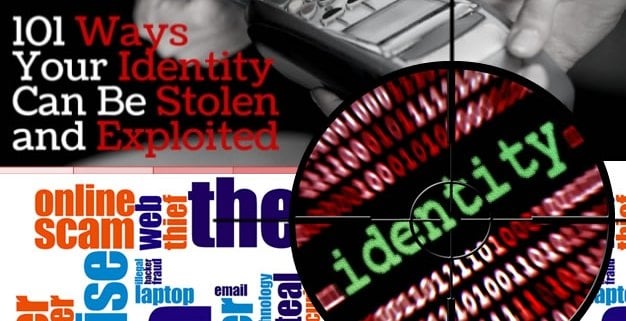101 Ways Your Identity Can Be Stolen
There are so many ways to get access to your private information these days. Even corporate giants have been hacked and had private information leaked. After reading our list of 101 Ways Your Identity Can Be Stolen, you may feel a little helpless and vulnerable. But by taking correct security measures and monitoring your credit score and financial accounts you should be able to identify any suspicious activity before it can harm you.
- Using your social security number to get insurance
- Stealing identifying information from your license
- Identity fraud for property purchase
- Creating a new identity
- Using a child’s identity
- Stealing from your mailbox
- Phishing emails
- Nigerian letter scheme, or 419 fraud
- Telemarketing calls
- Sharing your vacation pictures while you’re away
- Sharing sensitive information on social media
- Stolen cellular phones
- Using your debit card for online shopping
- Going through your trash
- Changing your mailing address
- Illegally tapping into your computer
- Having weak wireless security
- Using public Wi-Fi
- Weak passwords
- Keeping your social security card in your wallet
- Credit card skimming
- Responding to or downloading attachments from spam
- Never checking your credit
- Accessing fake credit card sites
- Going on fake financial or utility websites
- ATM watchers
- ATM overlays
- Grocery store PIN thieves
- Downloading torrents
- Falling for “free” offers, like vacations, gifts, and prizes
- Soliciting credit card information by phone
- Overusing your SSN for medical identification
- Sharing of private data on hacker networks
- Bulk gathering of IDs via black market
- Failing to destroy old hard drives and computers
- Stealing your electricity
- Job thieving
- Social engineering
- Vishing, or “voice fishing”
- Baiting by pretexting
- Man-in-the-middle attack
- Pharming
- Malware-based phishing
- Corporate data breaches
- Keystroke logging
- Rootkits
- Scam texting —SMiShing
- Viruses and worms
- False claims for refunds from the tax authority
- Passport thieves
- Publicly listing your hobbies, memberships, and employer
- Driver’s license theft
- Using your mother’s maiden name
- Defrauding banks
- Impersonating missing children
- Make being a financial adviser for the famous
- Stealing the identity of a missing person
- Faking one’s own death
- Synthetic identity theft
- Having a publicly listed number
- Keeping credit cards, checks, and bank statements in your car
- Not using a safe at home
- Not using a security service
- Not freezing your credit card accounts
- Leaving receipts behind
- Not writing “check ID or license” on the back of your cards
- Failing to consider one-off credit cards
- Shopping on un- trusted websites
- Not having anti-virus software on your PC
- Using the same passwords online
- Never changing your passwords
- Logging into accounts on public computers
- Putting checks in the mail
- Leaving bills at your mailbox for pick-up
- Moving out
- Not opting out of credit card offers
- Not using online billing options
- Using unsafe mailboxes
- Forgetting to check links online
- Accepting strange friend requests
- Not wiping your phone
- Using one email account for everything
- Thinking Macs are impenetrable
- Storing credit card information for later use
- Not using two-step verification if available
- Not changing your home locks and using a “do not duplicate” label on your keys
- Not using a lock on your phone or tablet
- Using camera phones
- Pickpocketing
- Ordering unauthorized credit reports by posing as a landlord
- RFID scanners
- Using your place of birth as a security question
- Obtaining information for use as revenge or blackmail
- Stealing information from doctor’s office
- Filling out car loan applications
- Clicking on pop- ups
- Thieves going through pharmacy waste baskets
- Mortgage ID theft
- Opening cyber greeting cards
- Installing electronic surveillance
- Payroll data breach
We hope you enjoyed our comprehensive list, and you’re feeling a little safer knowing how you can avoid these risky situations. If you would like to discuss more about IDENTIY THEFT talk to Team Discovery.



